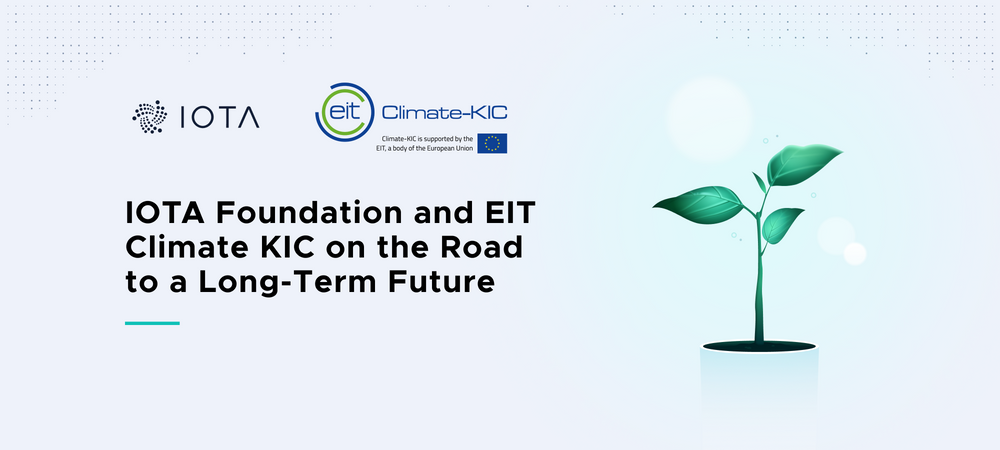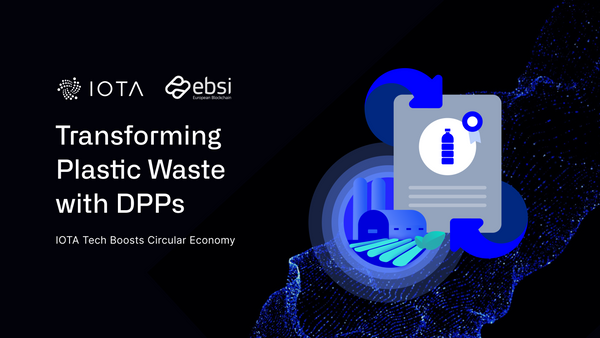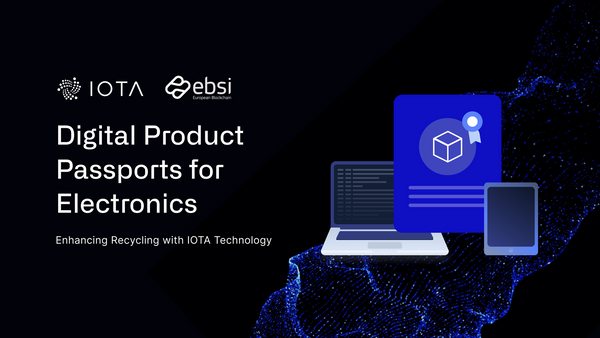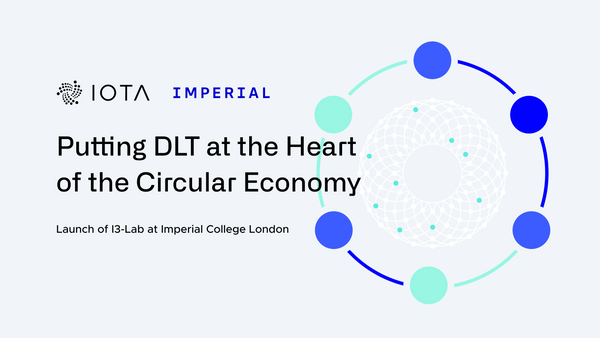IOTA Foundation and EIT Climate KIC on the Road to a Long-Term Future
This is the first of a three part series on IOTA in the Deep Demonstration on Long-Termism.
Last year, we proudly announced our collaboration with EIT Climate KIC, the leading European Climate innovation community as part of the Deep Demonstration on Long-Termism. In this short series, we want to share with you our learning and insight from this novel approach. In this part, we will explore the concept of Long Termism, how EIT Climate KIC orchestrates a diverse group to design new tools and interventions and how the IOTA Foundation contributes to this initiative.
Many of today's most urgent challenges such as climate change and depletion of ecosystems can be traced back to short term optimization in our social systems and organizations. Financial investments are judged on their returns in a few years, resources are being exploited despite negative long-term externalities. But it must not always be like this: Throughout history, human societies found and came up with and codified ingenious ways of ensuring the long-term sustainability of their culture. One notable and well-known example of this is the so-called seven generation stewardship practiced by the Iroquois. It requires the current generation to live and work for the benefit of the seventh generation into the future and reflect their actions based on the values and work of generations that preceded them. Rather than preventing, technology often accentuates shortcomings by replacing local, proven governance structures and yet again optimizing and reinforcing mechanisms of systemic short termism. This needs to change, and decentralized technologies might just be our best bet.
Breakthrough innovations provide avenues for society that were previously unthinkable. Bitcoin and subsequently IOTA can be seen as external shocks that opened new opportunities and indeed a new lens for understanding and shaping our future. At the IOTA Foundation, we believe that it is important to put in the effort to understand the lasting implications of the technology we are building and trying our best to make them fit for an uncertain, emergent future. The most important learning is: We can not do it ourselves. In the Deep Demonstration, we were fortunate to tap into the minds of brilliant people and organizations, share our perspectives on the problem and create a feasible approach to push toward systemic change by combining institutional re-design and experimentation.
Dr. Harald Rauter, Head of Emerging Disruptive Technology Experimentation at EIT Climate KIC explains the motivation behind the collective work on Long Termism: “We find ourselves in the unique moment in time where we collectively start to realize the urgency to re-image our now for the possibility of a different future; one that is climate just, socially inclusive and economically prosper for all. The challenge seems overwhelming – and maybe it is. What is clear is that we will have to leave our well-known paths and instead deliberately tap into a space of uncertainty. A space that is uncomfortable, awkward but also the space where the real transformative potential lies. At EIT Climate-KIC, we have therefore launched the Deep Demonstration approach which, at its core, aims to embrace the complexity of the challenge – instead of ignoring it.”
From IOTA´s perspective, this is one key challenge: How can we build technology that provides real utility and is empowering for people today while being designed for a far future that we can only imagine at this point? Throughout this year, we have therefore mapped our current work and tried to better understand its implications in collaboration with the design partners, in particular our friends from Dark Matter Labs:
- Internet of (Every)Thing: How can we design a fundamentally new way of organizing our material and natural resource economy and transition towards an economy of sharing and prosperity that puts human needs first? Some weeks ago, we shared with you our pilot project on digital monitoring, reporting and verification for climate change action. With such trusted, real-time data optimizing for long term sustainability becomes easier but what in reality, we still have a long way to go in structuring data from billions of devices and making sentient information available to everyone instead of being an additional driver of systemic inequality.
- Self-Sovereign Identity: How can identity management be empowering individuals to take control of their data and establish trusted connections with others and their environment that last over decades? While moving to a self-sovereign identity model is challenging in and of itself, we ought to consider the lasting consequences for how we perceive and use our digital identity.
- Decentralized Markets and Digital Assets: How can we rethink public institutions and the requirements to collectively invest in, understand and benefit from societal value? In the pursuit of local governance structures, decentralized marketplaces and the exchange of digital assets can bridge the gap between global coordination and local action.
One of the key results of our collective work with the design group and EIT Climate KIC is that we will continue in 2021 with an interconnected two-way approach, engaging with leading organizations to further the institutional landscape in a pursuit of long-term governance for sustainability and corresponding technological innovations, while simultaneously testing hypotheses in iterative experiments that seek to improve our understanding and tickle the mind and open room for imagination.
Tomorrow, in part two of this series, we will introduce our work furthering the institutional landscape while part three will give a glimpse into our experimental collaborative design process.




